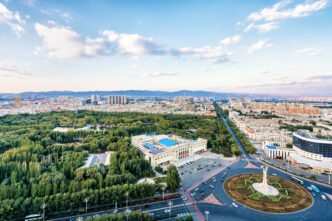Executive Summary
The Story So Far
Why This Matters
Who Thinks What?
U.S. President Donald Trump and Chinese President Xi Jinping are facing mounting challenges to salvage a planned summit, initially aimed at de-escalating trade tensions, amidst a sudden escalation of tit-for-tat economic measures. The heightened friction, notably China’s expanded curbs on rare earths exports and the U.S. restriction on technology sales, has introduced significant uncertainty into the bilateral relationship just days before their scheduled meeting.
Escalating Economic Tensions
The trade dispute, which had been simmering for months, intensified in early October following Beijing’s move to broaden controls on rare earths exports. This action was a direct response to a U.S. decision to increase the number of Chinese firms blocked from purchasing American technology. Experts suggest that China’s tightening control over critical minerals, including extraterritorial applications, signifies a strategic shift to leverage its dominance in vital supply chains.
Washington officials, caught off-guard by the scope of China’s measures, have accused Beijing of waging “economic war.” President Trump has openly questioned whether the summit will proceed, with both sides trading blame for the sudden escalation. This marks a stark contrast to President Trump’s earlier pronouncements of “progress” in various discussions, including trade and fentanyl smuggling.
Summit Prospects and Strategic Posturing
Despite the current friction, President Trump has indicated his continued intent to meet with President Xi in South Korea on the sidelines of the Asia-Pacific Economic Cooperation gathering. He reiterated a threat of 100% tariffs if a successful deal is not reached. To potentially de-escalate ahead of the summit, U.S. Treasury Secretary Scott Bessent and Chinese Vice Premier He Lifeng are scheduled to meet in Malaysia.
Analysts suggest that a comprehensive trade deal is unlikely, with a more probable outcome being a narrow agreement on a few specific issues. This assessment is partly attributed to each nation’s perception of holding the upper hand in the economic standoff. Wu Xinbo, director of the American Studies Center at Shanghai’s Fudan University, noted that China now views negotiations alone as insufficient, necessitating countermeasures against U.S. pressure.
Diverging Economic Perspectives
Michael Hart, president of the American Chamber of Commerce in China, highlighted that Chinese officials express confidence in their economy and believe the U.S. economy and political system are in turmoil, thus feeling they are in a strong bargaining position. Conversely, U.S. officials maintain confidence in their own economy while perceiving weaknesses in China’s, complicating negotiations.
The lack of a unified China policy within the Trump administration further complicates matters, with a mix of punitive measures alongside some easing on chip sales and the deal involving the social media app TikTok. While administration policies on China are generally hawkish, President Trump himself has shown a capacity for flexibility.
Future Measures and Global Impact
Both the U.S. and China are actively diversifying their economies and developing new measures. President Trump recently signed a critical minerals pact with Australia to counter Beijing’s market dominance, and the U.S. is reportedly considering targeting software-powered exports. Extensive sectoral tariffs are also being prepared for industries such as semiconductors and pharmaceuticals.
China, for its part, may intensify enforcement of rare earths controls, initiate new antitrust investigations into U.S. companies, or increase tariffs. Amidst this atmosphere of mistrust, an optimistic scenario would involve confidence-building measures and directives to negotiate a deal in the coming year, potentially beginning with agreements on agricultural products.








